Rhodomelaceae
Brooke Stuercke and D. Wilson Freshwater


This tree diagram shows the relationships between several groups of organisms.
The root of the current tree connects the organisms featured in this tree to their containing group and the rest of the Tree of Life. The basal branching point in the tree represents the ancestor of the other groups in the tree. This ancestor diversified over time into several descendent subgroups, which are represented as internal nodes and terminal taxa to the right.

You can click on the root to travel down the Tree of Life all the way to the root of all Life, and you can click on the names of descendent subgroups to travel up the Tree of Life all the way to individual species.
For more information on ToL tree formatting, please see Interpreting the Tree or Classification. To learn more about phylogenetic trees, please visit our Phylogenetic Biology pages.
close boxIntroduction
The Rhodomelaceae is estimated to be the largest red algal family (Scagel, 1953; Dawson, 1966; Abbott, 1999) with about 125 genera and some 700 species recognized worldwide (Kraft, 1981). This family displays great diversity in vegetative structure but appears to be uniform in reproductive development (Scagel, 1953; Dawson, 1966). Rhodomelaceae are uniaxial and polysiphonious. The polysiphonious structure results from the cells of the central axial filament cutting off pericentral cells by longitudinal tangential divisions (Stegenga, et al. 1997). The Rhodomelaceae differ from other Ceramiales families by the formation of pericentral cells in an alternating fashion. Characteristics of the Rhodomelaceae based upon Scagel (1953), Hommersand (1963), Maggs & Hommersand (1993), Stegenga et al. (1997), Abbott (1999), and Womersley (2003) are listed below.
Characteristics
- Thalli range from having simple, radial symmetry to complex, bilateral symmetry or dorsiventral organization
- Apices are straight, strongly curved dorsally, or spirally inrolled (Fig. 1)
- Specific formation of pericentral cells where they are cut off in an alternating sequence (Fig. 2)
 Click on an image to view larger version & data in a new window
Click on an image to view larger version & data in a new window
Fig. 2. Sequential transverse section views of axial cell (A) divisions to form pericentral cells (labeled 1 thru 4) in an alternating fashion. The developmental sequence goes from youngest segments on the left to older segments on the right. Drawing depicts a species with 4 pericentral cells. ©
- Number of pericentral cells ranges from 4 to 24 (Fig. 3)
- Presence of trichoblast, either pigmented and persistent usually associated with vegetative plants or colorless and deciduous usually associated with reproductive plants (Fig. 4)
- Four-celled carpogonial branch
- Cystocarps with distinct pericarp (Fig. 5)
- Spermatangia, in most cases, are associated with trichoblasts.
- Spermatangial heads can display an array of forms, such as, discoid (Fig. 6A) cylindro-conical (Fig. 6B), globose, or lobed.
- Tetrasporangia are generally borne on pericentral cells (Fig. 7)
References
Abbott, I.A. 1999. Marine red algae of the Hawaiian Islands. Bishop Museum Press, Honolulu. xv + 465 pp.
Dawson, E.Y. 1966. Marine Botany, An Introduction. Holt Rinehart & Winston, Inc., New York. 371 pp.
Hommersand, M.H. 1963. The morphology and classification of some Ceramiaceae and Rhodomelaceae. Univ. Calif. Publ. Bot. 35: 165-366.
Kraft, G.T. 1981. Rhodophyta, morphology and classification. In: The Biology of Seaweeds (Ed. by C.S. Lobban & M.J. Wynne), pp. 6-51. Blackwell Scientific Publications, Oxford.
Maggs, C.A. and M.H. Hommersand. 1993. Seaweeds of the British Isles, Volume 1 Rhodophyta, Part 3a Ceramiales. HMSO, London. 444 pp.
Scagel, R.F. 1953. A morphological study of some dorsiventral Rhodomelaceae. Univ. Calif. Publ. Bot. 27: 1-108.
Stegenga, H., J.J. Bolton and R.J. Anderson. 1997. Seaweeds of the South African West Coast.
Womersley, H.B.S. 2003. The marine benthic flora of Southern Australia Part IIID. Australian Biological Resources Study, Canberra. 533 pp.
Title Illustrations

| Scientific Name | Chondria dasyphylla (Woodward) C. Agardh |
|---|---|
| Location | Onslow Bay, North Carolina 27m depth |
| Specimen Condition | Dead Specimen |
| Identified By | D. Wilson Freshwater |
| Behavior | Rather beautiful swaying |
| Collection | WNC2004-065 |
| Collector | D. Wilson Freshwater & Ken Johns |
| Image Use |
 This media file is licensed under the Creative Commons Attribution-NonCommercial License - Version 3.0. This media file is licensed under the Creative Commons Attribution-NonCommercial License - Version 3.0.
|
| Copyright |
© 2006

|
| Scientific Name | Melanamansia fimbrifolia R.E. Norris |
|---|---|
| Location | Grant's Reef, Sodwana Bay, KwaZulu-Natal, South Africa 52-55m depth |
| Specimen Condition | Dead Specimen |
| Identified By | D. Wilson Freshwater |
| Behavior | Growing on sediment covered deep reef |
| Collection | WNC2006-036 |
| Collector | D. Wilson Freshwater & Kerry Sink |
| Image Use |
 This media file is licensed under the Creative Commons Attribution-NonCommercial License - Version 3.0. This media file is licensed under the Creative Commons Attribution-NonCommercial License - Version 3.0.
|
| Copyright |
©

|
| Scientific Name | Lenormandiopsis nozawae R.E. Norris |
|---|---|
| Location | Grant's Reef, Sodwana Bay, KwaZulu-Natal, South Africa 52-55m depth |
| Identified By | D. Wilson Freshwater |
| Behavior | Growing on sediment covered reef. |
| Collection | Herbarium specimen WNC2006-031 |
| Collector | D. Wilson Freshwater & Ken Johns |
| Image Use |
 This media file is licensed under the Creative Commons Attribution-NonCommercial License - Version 3.0. This media file is licensed under the Creative Commons Attribution-NonCommercial License - Version 3.0.
|
| Copyright |
©

|
About This Page
Work on the Rhodomelaceae Tree of Life page was supported by NSF PEET grant DEB-0328491 and the Friends of CMS DNA Algal Trust.

University of North Carolina at Wilmington

University of North Carolina, Wilmington, North Carolina, USA
Correspondence regarding this page should be directed to Brooke Stuercke at and D. Wilson Freshwater at
Page copyright © 2006 and
All Rights Reserved.
- First online 22 September 2006
- Content changed 22 September 2006
Citing this page:
Stuercke, Brooke and D. Wilson Freshwater. 2006. Rhodomelaceae. Version 22 September 2006 (under construction). http://tolweb.org/Rhodomelaceae/23531/2006.09.22 in The Tree of Life Web Project, http://tolweb.org/




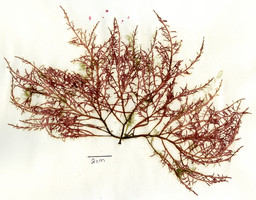
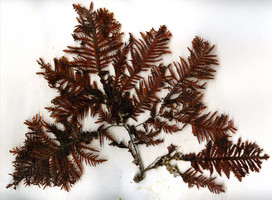
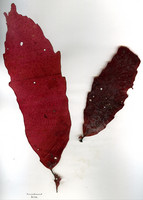
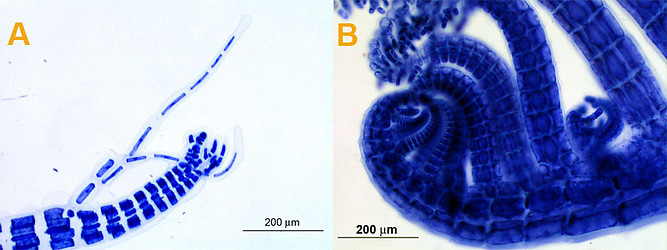

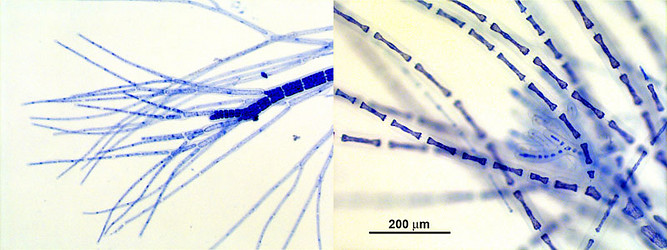







 Go to quick links
Go to quick search
Go to navigation for this section of the ToL site
Go to detailed links for the ToL site
Go to quick links
Go to quick search
Go to navigation for this section of the ToL site
Go to detailed links for the ToL site